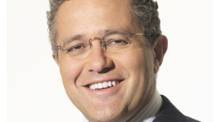The United States is a country that likes to be taken seriously. It’s also a country that just spent upwards of an entire year and $ 5 billion on elections that achieved approximately nothing. While the politics industry was consumed by urgent, domestic concerns—can you believe that Mitt Romney wants an elevator for his cars?—one or two things were happening overseas. You know, meltdown in Europe. Political collapse in Japan. Civil war in Syria. Scandals, slowdown, and a leadership transition in China.
Sometimes it was difficult to retain focus on Clint Eastwood’s empty chair, Ann Romney’s horse, and Elizabeth Warren’s Cherokee lineage. Somehow the country rose to the challenge, taking time to weigh which was more troubling, Romney’s method of dog transport or Barack Obama’s memory of dog meat being tough when he tasted it as a boy in Indonesia.
The British say Americans lack a sense of the absurd. Not so. Consider the Oct. 22 presidential debate on foreign policy. Mostly it was about domestic policy, though the candidates did note that China, Iran, and several other foreign nations exist. Events in Europe weren’t worth mentioning, but Israel was a friend, they agreed. Discussing geostrategy, Obama explained to Romney: “We have these things called aircraft carriers, where planes land on them. We have these ships that go under water, nuclear submarines.” Romney was unfazed. “We will stand with Israel,” he affirmed.
The same absurdist tradition extends to fiscal policy. The country’s political class maintains it’s been grappling with fundamental questions about the limits of markets and the role of government, when it’s mostly been arguing about the top rate of income tax, a topic so narrow it’s almost beside the point. In the negotiations over the so-called fiscal cliff, real choices about fiscal ends and means have been excluded by tacit agreement, just as they were during the campaigns.
The White House talks as though adequate public provision, including an enlarged commitment to publicly supported health insurance, can be financed by a sliver of taxpayers at the top; everybody else gets something for nothing. Republicans offer a similar deal. Taxes can be driven lower by deep spending cuts (details to come) which the country would hardly notice. That’s the great debate about the country’s direction?
A more attentive political class would have noticed, first, that fiscal policy is not merely a domestic issue, and the global economy is still a dangerous place. Five years after the onset of the Great Recession, the biggest and most populous economies are stressed and many governments are flailing. As an exporter, outward investor, and record-breaking debtor, the U.S. is bound up with all of them. A worst-case scenario in Europe could send the U.S. back into recession. The same Europe mentioned only in passing in that Oct. 22 presidential debate.
The world economy is growing at between 3 percent and 4 percent—a crawl by ordinary standards. The International Monetary Fund predicts that the advanced economies will grow next year by just 1.5 percent. The euro area is back in recession, and Japan could be headed that way. The volume of world trade grew by just 3.2 percent in 2012, and the IMF expects growth of less than 5 percent next year. Compare that with the four years leading up to the crisis: Trade volumes grew by an average of nearly 9 percent annually. The Great Recession isn’t over.
Emerging and developing economies were a source of strength when the downturn began, but that phase has ended. China’s growth slowed this year with the shrinking of its export markets and after the government tightened access to credit, fearing a real estate bubble. There are hopes that Xi Jinping, freshly installed as head of the Communist Party’s fifth-generation leadership, will have a bigger appetite for economic reform than his predecessor. Still, expect setbacks. The expansion has been powered by investment in infrastructure of dubious viability, financed with short-term bank loans rather than bonds—a formula for financial frailty.
In 2012 many investors decided India’s economic reforms had stalled. Too little infrastructure remains India’s problem, as the biggest power outages in a decade illustrated. Business confidence sagged, and output slowed. In recent weeks, Manmohan Singh’s government has renewed its commitment to liberalization. We’ll see.
Brazil’s government thought it was pioneering a new model combining social inclusion and rapid growth, but the global slowdown and its own efforts to stem inflation cut growth to just 1.5 percent in 2012. Its leaders said the U.S. had started a “currency war” and was resorting to “monetary protectionism.” (It’s called quantitative easing in the north.) Growth slowed in Russia and South Africa as well. Blame weak governments and strong economic ties to Europe.
In all, the BRICs aren’t what they used to be. The developing countries in the aggregate grew by only a little more than 5 percent this year, down from over 7 percent in 2010. IMF forecasters expect little improvement in 2013.
Political paralysis plagued Japan all year. The Liberal Democratic Party’s landslide election victory this month and Shinzo Abe’s return as prime minister could make a difference. Abe has promised a dose of economic radicalism—starting with stronger fiscal and monetary stimulus. But Japan’s debt is already so vast that his budget options are few. Heavy spending on reconstruction after the earthquake buoyed growth this year. Forecasters expect it to subside again.
Britain’s experiment with “expansionary austerity” failed. Its overdeveloped financial sector, overextended mortgage borrowers, and exports to the euro area all continue to weigh on demand. With a currency of its own, the Bank of England resorted to quantitative easing and tolerated persistent overshoots of its inflation target. That helped, but growth stayed slow and the economy contracted again.
Which brings us to the central figure in our great global drama. Despite the recent lull in financial markets, the euro area still tops the list of dangers. Massive unemployment in the currency zone’s periphery and, as yet, no real prospect of recovery make political upheaval and a new round of financial alarm all too probable. Europe’s banking system is far from safe. The recent agreement to create a single bank supervisor for the euro countries is welcome but stops well short of a credible plan to deal with the main problem—which is to recapitalize distressed banks without driving peripheral-country governments to insolvency.
A big new setback in Europe is all too possible. It would shrink American export markets further and could trigger a new round of panic in financial markets. The U.S. Department of the Treasury has tried to influence developments in Europe, Japan, and the big emerging economies, but these efforts to persuade haven’t worked. What the U.S. should do instead is use its own financial resilience as a beacon of reassurance to financial markets.
In practical terms, what does that require? Like it or not, fiscal policy is crucial. On current policies, America’s net federal debt would rise from roughly 70 percent in 2012 to more than 90 percent after 10 years and roughly 200 percent by 2040. Thereafter it rises literally off the charts. The bargaining position that the White House brought to the fiscal-cliff talks is essentially its budget from last spring, which proposes to stabilize the debt ratio at a level a little higher than now: between 75 percent and 80 percent.
The experience of other countries suggests that stabilizing the debt at such a high level isn’t enough. Japan has shown it’s possible to run net debt as high as 135 percent of gross domestic product—the ratio estimated for 2012—without provoking a bond-market backlash. For that, though, thank the country’s captive savers, a cultural legacy the U.S. can’t count on. And whatever Abe, the incoming prime minister, may say, Japan’s space for further fiscal stimulus is close to zero. The lesson is that chronic inattention to fiscal control eventually kills fiscal flexibility. In the next crisis, you’ll need it and it won’t be there.
In Europe, put Greece aside as an outlier; Italy, one of the region’s biggest and richest economies, is more to the point. Its ability to borrow has been called into question at a debt ratio not much higher (and with a flatter trajectory) than America’s. The debt ratio of Spain, another distressed euro-area borrower, has been lower than America’s throughout. Neither Italy nor Spain is able to print currency to service its debts.
Just where the debt limit is for an economy attached to a mint, such as the U.S., is impossible to say—until the economy encounters it, a discovery best avoided. The real lesson from the rest of the world is not about exact debt-ratio thresholds, but that fiscal space eventually runs out, and when it does you’re in trouble.
Look at it this way: The fiscal response to the Great Recession increased the U.S. debt ratio by some 35 percentage points of GDP between 2007 and 2012. Let’s suppose, like the White House, that the fiscal stimulus was money well spent. The next economic calamity would presumably call for another robust intervention. Can the country plausibly hope to increase its debt by another 20 percentage points of GDP, let alone another 35 percentage points, starting at a ratio of 80 percent?
America’s goal should be to bring the debt ratio back down to the point at which it can safely contemplate another big fiscal intervention if it needs to make one. That sounds hard. It will demand a different kind of discussion than the one Washington is presently having.
Yet it’s feasible. Policymakers even have a blueprint: the plan designed by the Simpson-Bowles fiscal commission, a panel the president summoned—and then ignored. It proposed a fiscal adjustment roughly twice as powerful as the one being framed in the fiscal-cliff talks. This would stabilize the debt ratio by the middle of this decade, then reduce it to 60 percent of GDP by 2024 and 40 percent by 2037. The commission showed that if the government looks for savings in every category of spending, the cuts aren’t fierce. Broadening the country’s depleted tax base by closing loopholes and exemptions (including preferences for investment income) could raise ample revenue without higher marginal rates.
Naturally, there’s more to economic policy than the budget. A demanding global policy agenda also needs American attention and leadership. After the crash, there was genuine international cooperation. The resurgence of protectionism many predicted as the global contraction got worse never happened. Central banks coordinated their responses effectively.
On the other hand, governments pursued financial reform mostly at the national level. Defects in the multinational Basel process for regulating bank capital helped cause the crisis in the first place, and there’s no substitute for effective coordination in this area. America must take the lead. Trade protection didn’t explode after 2008, but the Doha Round of new liberalization is defunct. The U.S. should look to revive it. Worldwide, efforts to insure against the dangers of climate change are flagging. Here too, American leadership, disgracefully overdue, is needed.
At home, suppressing the instinct to obsess over points of disagreement, Washington could make common cause over education and skills. A little less navel-gazing might scare the town straight. For decades after 1945, the U.S. increased the proportion of its workforce with a college education faster than anywhere else, and the economy reaped the benefits. That advantage is at an end. By the early 2000s a little over 40 percent of Americans aged 25-34 had post-secondary education, about the same proportion as those aged 55-64. In other advanced economies, the younger generation is typically much better educated than people approaching retirement—and in a dozen or so countries, rates of higher education for 25- to 34-year-olds have surpassed America’s.
The U.S. still has priceless assets in the vibrancy of its private sector and its culture of innovation and risk-taking, but its skills and education deficits are a big and worsening concern—holding back growth, contributing to income inequality, and adding to poverty that’s already high by advanced-economy standards. Immigration reform offers a partial short-term remedy. Longer term, education policy requires an overhaul.
Policies like these needn’t divide the country. They aren’t a matter of Left or Right. Members of both parties backed Simpson-Bowles and support liberal trade and pro-skills immigration reform. Prominent Democrats and Republicans advocate far-reaching education reform. Scaling these ideas up to national policy, though, requires a broader consensus and the willingness to concentrate on practical points of agreement, rather than totems of doctrinal correctness.
Washington can do better than that. Consensus is a lost art that many voters hoped President Obama would rediscover. He achieved a lot in his first term—the health-care reform he’d promised in the 2008 campaign and a fiscal stimulus that likely avoided an economic catastrophe—but he didn’t mend America’s broken, inward-looking, small-minded politics. Starting now, he gets another chance.
Businessweek.com — Top News
Title Post: America, Please End the Small-Minded Policy Blather
Rating:
100%
based on 99998 ratings.
5 user reviews.
Author: Fluser SeoLink
Thanks for visiting the blog, If any criticism and suggestions please leave a comment





